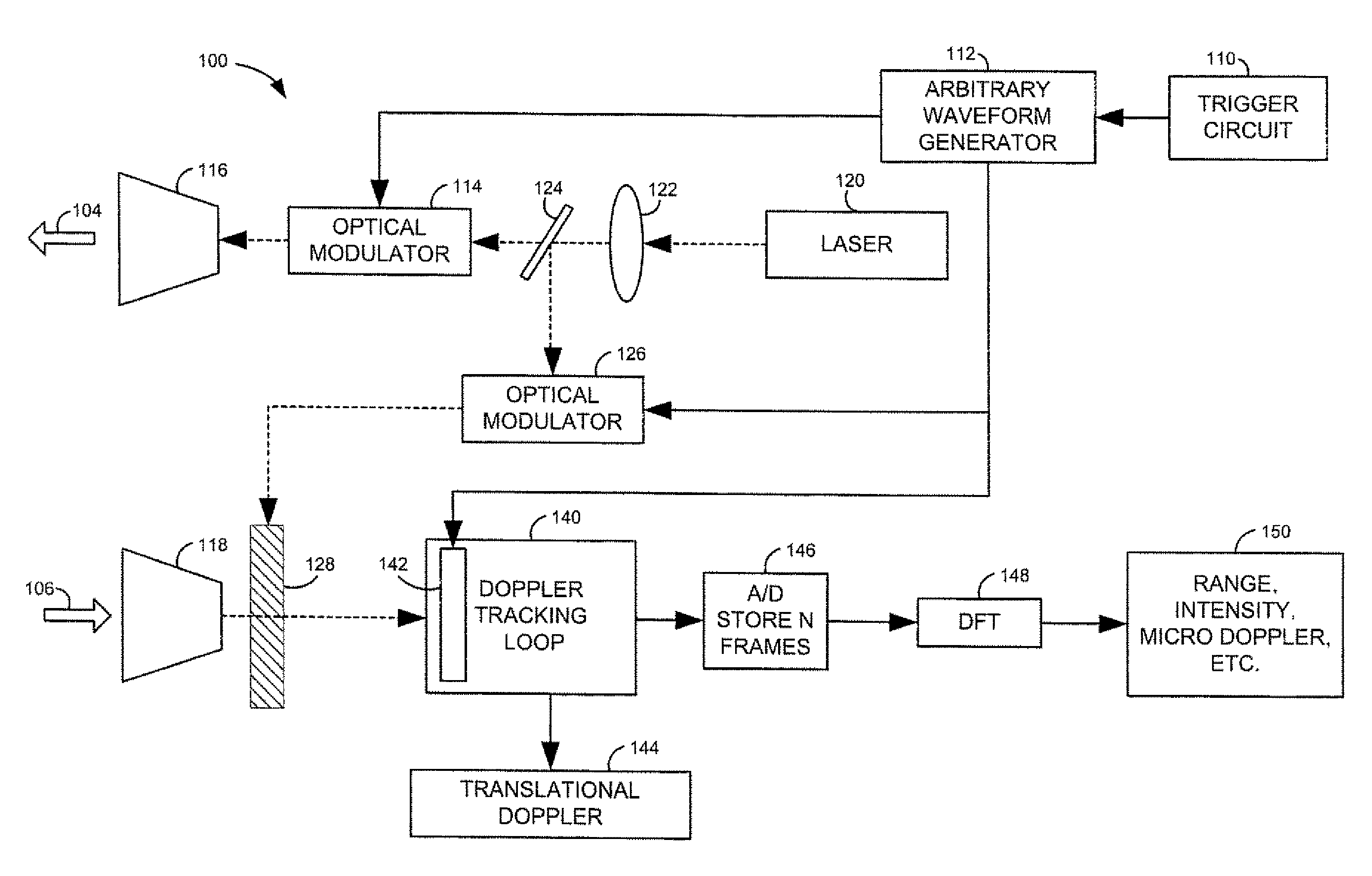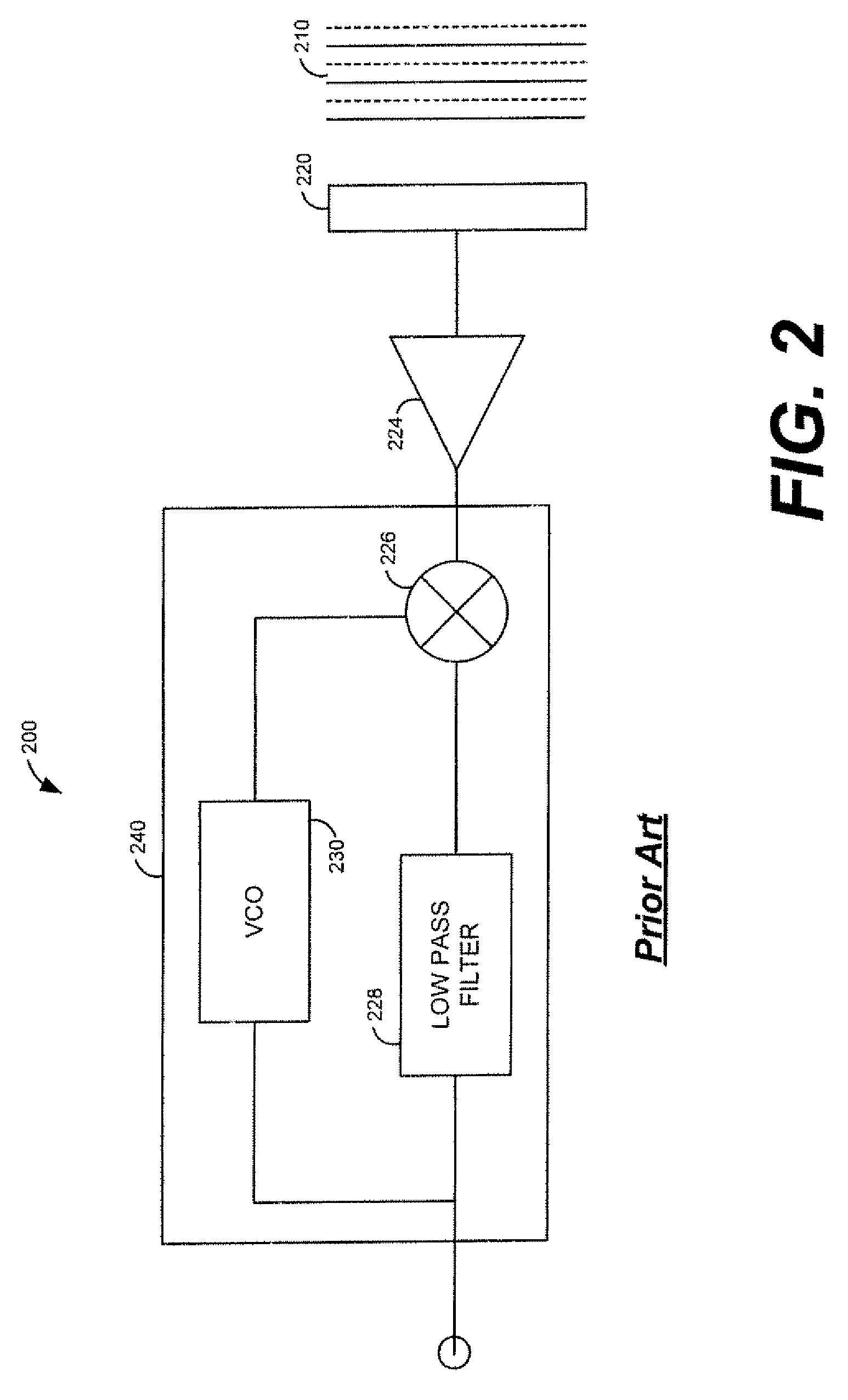Systems for doppler tracking using photonic mixing detectors
a detector and photonic technology, applied in the field of laser detection and ranging, can solve the problems of not always advantageous use, more expensive and difficult to design and manufacture focal plane arrays and their readout integrated circuits with such high bandwidths compared to lower bandwidth arrays, and add a lot of additional complexity to the system
- Summary
- Abstract
- Description
- Claims
- Application Information
AI Technical Summary
Problems solved by technology
Method used
Image
Examples
Embodiment Construction
[0017]This disclosure relates to various embodiments of laser detection and ranging (LADAR) systems. Several embodiments are described below with reference to FIGS. 1-8. As an introductory matter, however, the basic architecture, operation, and functionality of an exemplary, non-limiting embodiment of a LADAR system will be briefly described. In general, the LADAR system operates by modulating a light signal with a known waveform and transmitting the modulated light signal toward a target. A portion of the transmitted laser intensity may be reflected from the target back toward the LADAR system and received by a sensor. The received light signal, which contains the original transmitted laser modulation, is delayed in time because of the long travel path from the transmitter to the target and back to the receiver and the optical carrier and modulation signal is shifted by the target velocity due to the Doppler Effect.
[0018]The LADAR system images the target by detecting various types...
PUM
 Login to View More
Login to View More Abstract
Description
Claims
Application Information
 Login to View More
Login to View More - R&D
- Intellectual Property
- Life Sciences
- Materials
- Tech Scout
- Unparalleled Data Quality
- Higher Quality Content
- 60% Fewer Hallucinations
Browse by: Latest US Patents, China's latest patents, Technical Efficacy Thesaurus, Application Domain, Technology Topic, Popular Technical Reports.
© 2025 PatSnap. All rights reserved.Legal|Privacy policy|Modern Slavery Act Transparency Statement|Sitemap|About US| Contact US: help@patsnap.com



